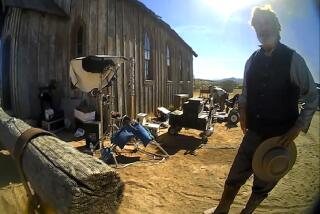Report Finds Flaws in FBI Bullet Analysis
- Share via
A scientific report released Tuesday revealed serious flaws in FBI testimony involving evidence on the chemical composition of bullets presented in hundreds of criminal cases.
The report stopped short of condemning the forensic method outright, but it proposed changes in how the bureau portrayed bullet-lead evidence that would significantly undercut the technique’s usefulness in a criminal trial, forensic science experts said.
“If this technique had not been used for years to send people to prison, no reasonable scholars of forensic evidence would consider it ready for court,” said William Thompson, professor of law and criminology at UC Irvine.
The report called FBI testimony that crime-scene bullets could be linked to bullets found in a box owned by a suspect, or to similar boxes manufactured at the same time, “seriously misleading” and “objectionable.” The findings could prompt the reopening of cases in which bullet-lead analysis played a role in convictions. FBI examiners have testified about the method in about 500 cases since 1980.
“Currently, attorneys for the FBI as well as the Department of Justice are studying the report as well [to determined if] anything in the report should be conveyed to prosecutors” about reviewing such cases, said FBI Laboratory Director Dwight E. Adams.
In bullet-lead analysis, bullets or bullet fragments recovered at a crime scene are tested for trace elements like tin or silver. Precise measurements of such traces are then compared to tests of bullets found in a suspect’s possession to determine if they are “analytically indistinguishable” siblings.
FBI examiners have used the method for about four decades. Juries have often accepted such comparisons as compelling.
A Times investigation of bullet matching published last year suggested that the FBI’s use of the technique might have greatly inflated its scientific validity.
The new report was conducted by a panel of the National Research Council, a division of the National Academies, the nation’s preeminent scientific society.
The panel, comprising experts in chemistry, forensic science, law and statistics, worked for a year on the study, which the FBI commissioned after independent experts questioned the validity of bullet matching.
The panel’s report indicated that bullets made from the same batch of lead may significantly vary in their chemical makeup. Yet, bullets from different sources can share trace elements in nearly identical amounts.
The report noted that up to 35 million bullets from a single manufacturing run may share nearly identical compositions, and that an unknown number of other bullets from different sources may share the same characteristics -- greatly reducing the significance of a match.
“Detailed patterns of distribution of ammunition are unknown, and as a result, an expert should not testify as to the probability that a crime scene bullet came from the defendant,” the report said. “Variations among and within lead bullet manufacturers makes any modeling of the general manufacturing process unreliable and potentially misleading.”
The report, however, validated the bureau’s testing methods and noted that two bullets with the same chemical composition were more likely to have the same origin -- although that probability cannot be accurately measured. Adams, of the FBI’s crime lab, said the report “clarifies and enhances what we are currently doing.” He added: “The report clearly states that this is a reasonably accurate way to determine whether two bullets could have come from the same source.”
Adams said the bureau expected to adopt most of the report’s suggestions before new testimony on bullet-lead matching was offered by FBI examiners. But legal and forensic science experts said the report’s conclusions would probably prompt some courts to reject bullet-lead testimony.
“It diminished the probative value of the technique in a substantial way,” said John Thornton, professor emeritus of forensic science at UC Berkeley. He called the bullet manufacturing variations cited by the report “a real harpoon in the validity of the method.”
“If you were told that the perpetrator had brown hair, would that be relevant? Yes, but it doesn’t get you very far,” said David L. Faigman, a professor at UC Hastings College of the Law in San Francisco. “It doesn’t mean that it ought to be admitted, because it may not have enough relevance to offset the possibility that it might confuse a jury and waste a court’s time.”
The National Assn. of Criminal Defense Lawyers and the Innocence Project announced Tuesday that they would also try to identify “wrongful convictions based on overstatement of lead analysis evidence.”
Reversing convictions might prove difficult because the bullet-lead evidence is usually part of a larger prosecution case.
One of the first cases to cite the new study on appeal may be that of Michael Behn, a New Jersey man convicted of murder in 1997. At trial, an FBI examiner testified that lead collected at the crime scene matched bullets in Behn’s possession.
More to Read
Sign up for Essential California
The most important California stories and recommendations in your inbox every morning.
You may occasionally receive promotional content from the Los Angeles Times.










